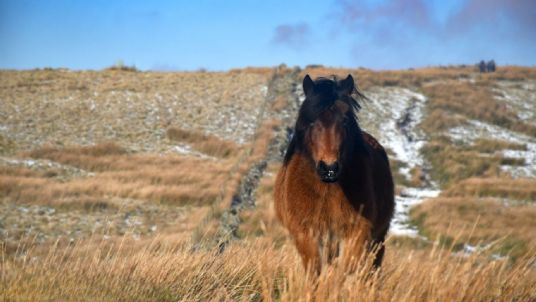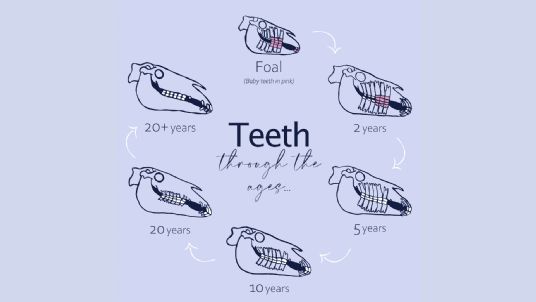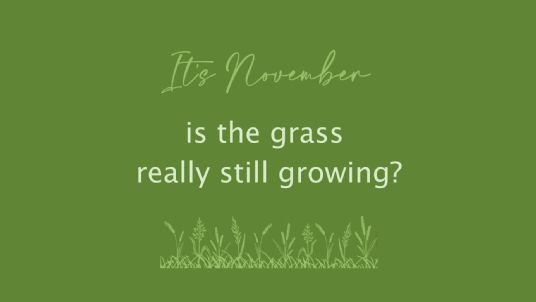Feeding your horse as nature intended
14 October 2015
Before we can consider what we should be feeding our horses, we need to consider where and how they evolved, as this has formed their unique digestive tract and enabled them to be such a successful species on the Central Eurasian Plateau.
As horses are prey animals, with their fleetness of foot their main means of escape, they have evolved a system of fermenting their herbivorous diet in their hind gut. A small stomach ensures there is not a large of bulk of food sharing space with vital heart and lungs and rarely holds food for more than a few minutes. As the horse grew bigger over millions of years it needed to eat more and more food to survive, and fortunately the microbes that ferment forage (stems, leaves, flowers) into useful nutrients evolved along with the horse.
For 30 million years the horse developed as a grazer, sharing its plains home with many other species. It had to adapt to survive and thrive on what the plains had to offer, so if we look at the vegetation of the plains we can see what horse food truly is.
The grassy, treeless plains actually have as much in the way of flowering plants as they do grass. These plants are deeper rooting than grass and are able to access a wider range of minerals and trace elements. Modern pasture does not have nearly so many wild flowers and most hay is only grass and often just one species of grass. In order to make up for this lack of deep rooting forbs we can balance a grass-dominated diet with feeds such as lucerne (American name alfalfa) or sainfoin, and when we re-seed our paddocks, look for a mix that has herbs as well as lots of different, native-type grasses.
Oils and fats are not a major part of the horse’s diet, although they are well-tolerated and can be a useful source of non-heating energy. On that native plain there is not a lot of oil, but many of the plants that grow there will have oily seeds as these are adapted to the dry and sometimes harsh conditions. It is interesting that the oils a horse evolved to consume are far higher in omega-3 (anti-inflammatory) than omega-6 (pro-inflammatory). In fact, omega-3 out strips 6 by a factor of four times. Many vegetable oils have very low levels of omega-3 (rice bran oil, sunflower, soya, etc.) and even those with a bit more still have less than omega-6 (rape seed oil for instance). Linseed, however, is unique in having the same balance of omega oils as in the horse’s natural environment. No wonder so many horse carers for so many centuries have slaved over hot stoves preparing linseed – they could see its benefits even if they did not exactly understand how or why it was so beneficial.
We are all aware these days that fibre is the most important part of a horse’s diet. It is also important to ensure that this fibre comes from forage rather than being the waste or by-product of some other process. Fresh and green are major features of what the horse should eat. Heavily processed, effectively denaturised, feeds will not give the best results.
So, how should we best feed our horses? Good, extensive grazing is a good start but not always possible. Good meadow hay can in part make up for this. The feed bowl can balance the diet and provide additional calories for harder work, but even here, we need to remain true to the horse’s origins to get the very best results. Flash dried green forages are almost as good as the real thing and balancers based on full fat, cooked linseed ensure the right omegas are fed without the hassle of prolonged home cooking. Spring grass provides nutrition of the highest level for horses when their needs are greatest, that is to say early lactation, when the mare has recently foaled. Spring grass has around 10% more calories than oats and a whole heap more vitamins and minerals, and can really support the hardest, fastest work. The disadvantage is that the real thing is available only in the spring! It is just as well that innovative companies such as Simple System have found a way of preserving this valuable resource for use all year, in the form of Red Bag Grass Pellets.
Issues arising from excess acidity trouble many horses under modern management and diets. Chewing generates saliva which contains bicarbonate, an acid neutraliser, so we should ensure our horses have access to forage such as hay, haylage or grazing all the time. Some particular plants have additional ability to buffer acid, including lucerne. Short chop lucerne is the ideal forage to feed directly before work, and an increasing number of vets now recommend that all horses be offered forage directly before work. Whilst starchy feeds such as those based on cereals may cause digestive upset if fed close to work, the forages that the horse evolved to eat offer substantial benefit in protecting the stomach lining and reducing excess acid.
The horse evolved to eat plants that grow in a semi-arid environment, high in fibre, relatively low in nutrition but packed with vitamins and minerals. They are not adapted to eat starchy or very sugary foods, nor those that originate from tropical climes. If we work with nature, our horses will reward us with better general health, stronger hooves, glossy coats, supple skin, fewer illnesses, better joints and, ultimately, longer lives.
Photo courtesy Jan Harber



